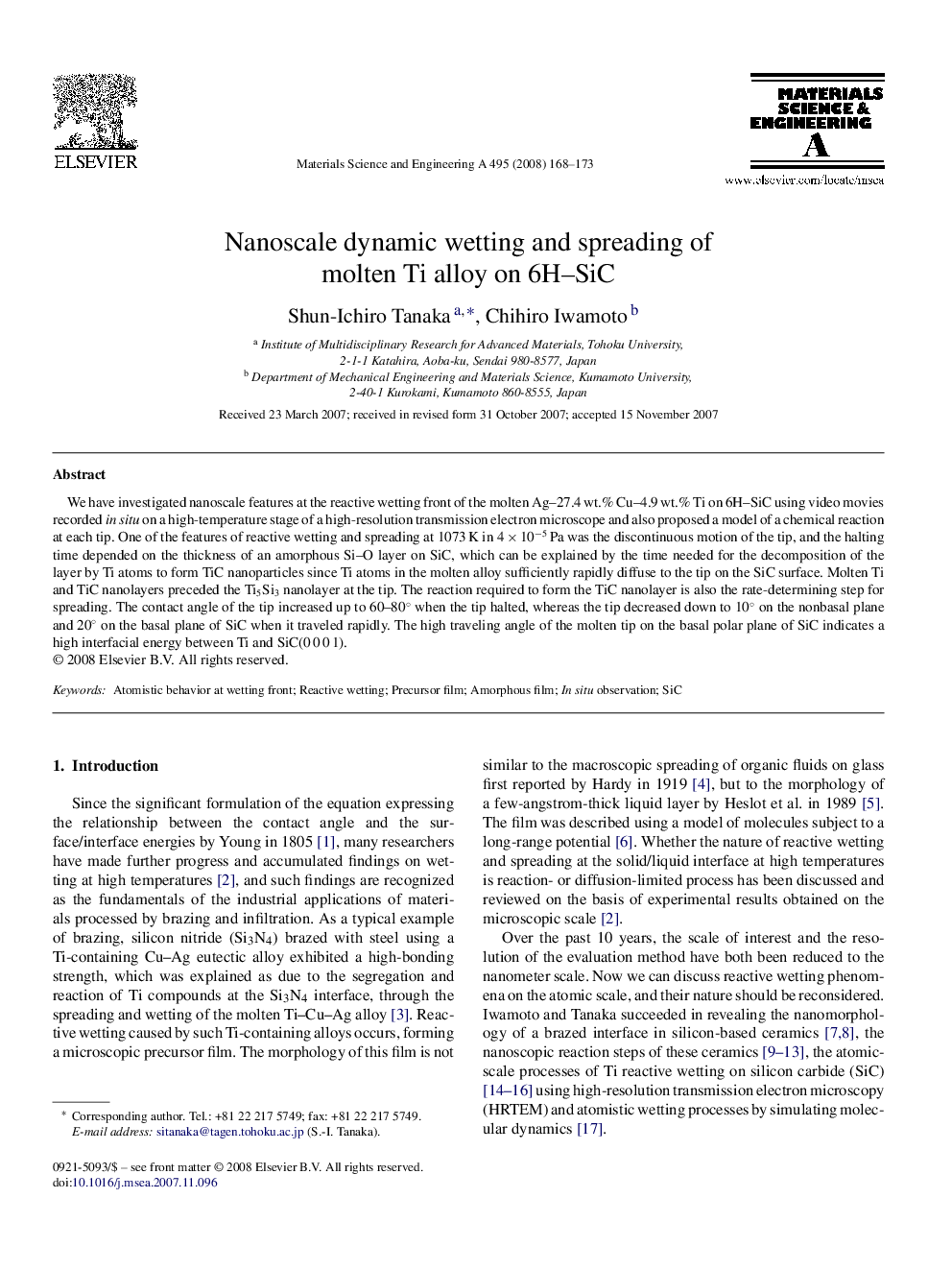| Article ID | Journal | Published Year | Pages | File Type |
|---|---|---|---|---|
| 1581591 | Materials Science and Engineering: A | 2008 | 6 Pages |
We have investigated nanoscale features at the reactive wetting front of the molten Ag–27.4 wt.% Cu–4.9 wt.% Ti on 6H–SiC using video movies recorded in situ on a high-temperature stage of a high-resolution transmission electron microscope and also proposed a model of a chemical reaction at each tip. One of the features of reactive wetting and spreading at 1073 K in 4 × 10−5 Pa was the discontinuous motion of the tip, and the halting time depended on the thickness of an amorphous Si–O layer on SiC, which can be explained by the time needed for the decomposition of the layer by Ti atoms to form TiC nanoparticles since Ti atoms in the molten alloy sufficiently rapidly diffuse to the tip on the SiC surface. Molten Ti and TiC nanolayers preceded the Ti5Si3 nanolayer at the tip. The reaction required to form the TiC nanolayer is also the rate-determining step for spreading. The contact angle of the tip increased up to 60–80° when the tip halted, whereas the tip decreased down to 10° on the nonbasal plane and 20° on the basal plane of SiC when it traveled rapidly. The high traveling angle of the molten tip on the basal polar plane of SiC indicates a high interfacial energy between Ti and SiC(0 0 0 1).
